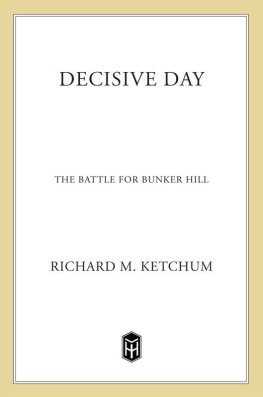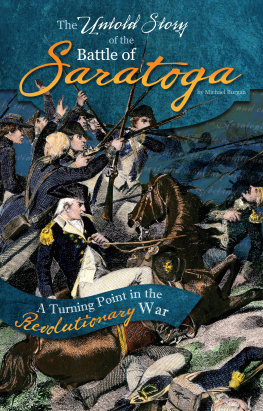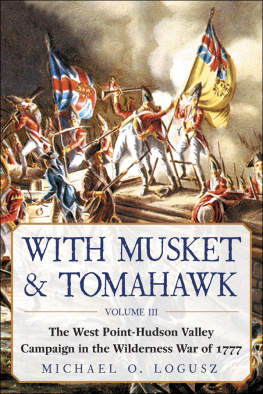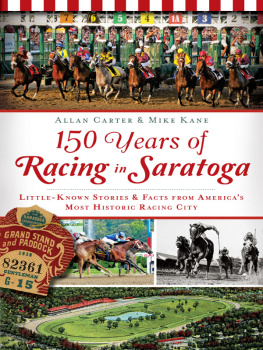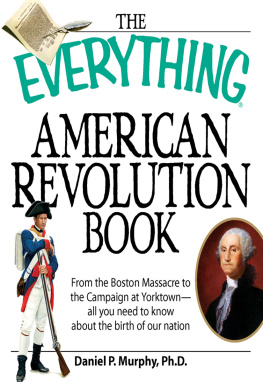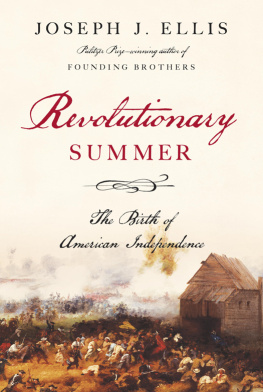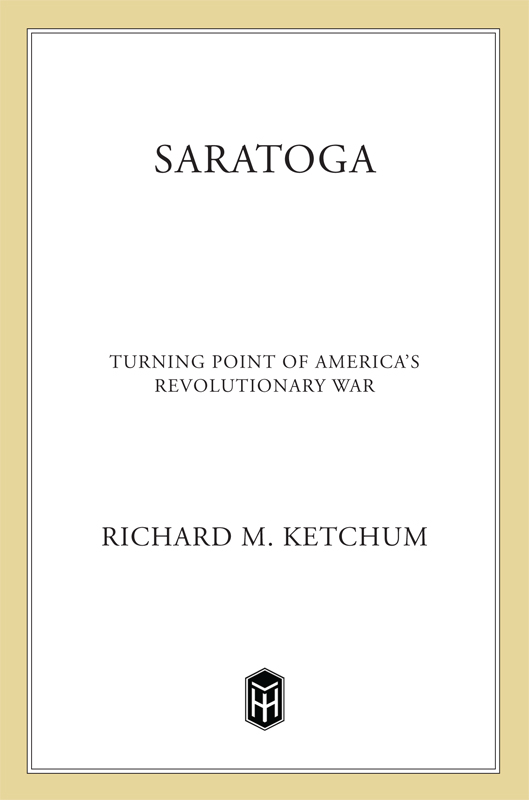Contents
Guide

The author and publisher have provided this e-book to you for your personal use only. You may not make this e-book publicly available in any way. Copyright infringement is against the law. If you believe the copy of this e-book you are reading infringes on the authors copyright, please notify the publisher at: us.macmillanusa.com/piracy.
Contents
To Bobs, as ever,
and to the memory of three friends
who understood that history is us
Bruce Catton
Allan Nevins
and my father, George Ketchum
List of Maps
Preface
At Saratoga, the British campaign that was supposed to crush Americas rebellion ended instead in a surrender that changed the history of the world.
Thanks to Saratoga, France entered the war as Americas ally. Without the French navy, troops, and the financial and military aid so desperately needed, there is no telling what might have happened, but it is entirely possible that the unrelieved suffering and economic chaos brought on by three years of fighting might have led the Americans to negotiate a settlement with Great Britaina settlement that could hardly have been on favorable terms.
So Saratoga was the watershed, the turning point. It meant that the fight for independence would continue and ultimately be won.
More than the Civil War or World War II, more than the opening of the West or the Great Depression, the American Revolution is the signal moment in our past. It was the event that gave birth to the nation, bequeathed a common purpose to the most varied of peoples, and ignited a beacon of hope that inspires the oppressed to this day.
A profound political and social upheaval, it was also a dirty, bloody, civil war as well as a struggle for freedom. John Adams described the Revolution in which he played such an important role as the most complete, unexpected and remarkable of any in the history of nations. To loyalists, on the other hand, it was treasonable and frightening, this specter of a colonial people rising up against authority, this revolt by men and women of largely British ancestry against the patriarchal symbol of the British family, King George III.
No reporters covered that conflict, no camera captured the faces or actions of participants, so our image of the revolutionary generation depends entirely on letters and journals written by those who were there and saw the extraordinary events occur. It is impossible to read these documents without a sense of awe at the enormous hardships and suffering rebel soldiers enduredhunger, smallpox and other diseases, lack of food and clothing and blankets and shoes, deprivation beyond imagining.
What seems to have kept them going were four powerful convictions that recur in their letters like strands in a tapestryreverence for their Maker, love of country, devotion to their family, and a deeply held belief in freedom. Four faithsGod, country, family, and liberty.
The chain of events that led two armies to their fateful rendezvous at Saratoga is a war story, to be sure, but in its unfolding it reveals much about the nature of Americans and the contest that ultimately produced the most powerful nation on earth. Never were the devotion and fortitude of those who stood up to the enemy put to a sterner test than during the terrible summer of 1777, when the chips were down and the outcome of the war for independence hung in the balance.
Richard M. Ketchum
Dorset, Vermont
March 15, 1997
Chapter 1
The Secret Mission
He was bone-tired, painfully aware of his seventy years, and not at all sure he would survive the long journey that lay ahead. It was the second day of April in 1776, chilly enough to remind a man that winter was not yet over, when Dr. Benjamin Franklin and four companions stood on the Albany pier in New Yorks East River, watching their servants load the waiting sloop with baggage, food, blankets, folding beds, and a new saddle Franklin had purchased in Philadelphia.
This was an odd bunchfive men of disparate age, temperament, and experience, bound on a secret, highly sensitive mission to Canada on behalf of the Second Continental Congress. They had departed from Philadelphia on March 26, and a leisurely journey across New Jersey brought them to New York three days later. Assuming that the city would be crowded, Franklin had written ahead to an old friend, William Alexandera burly, energetic major general in the Continental Army who laid claim to an earldom in Scotland and styled himself Lord Stirling even in these egalitarian times, and who was now in charge of preparing the citys defenses against an expected attack by the British. The general found lodgings for them and arranged for a vessel to take them to Albany, the first major stop on what promised to be a long and arduous expedition.
From where the travelers stood, the noise and smells of the bustling port were overpowering. The entire city of New York was contained within the southern end of Manhattan Island, and it was a hodgepodge of old Dutch and new English structures, fashionable brick residences standing cheek by jowl with mechanics workshops, law offices, and the counting houses of merchants. Narrow streets, reeking of horse and pig manure, were crowded with boardinghouses, countless shops and warehouses, and a sea of trade signs, all surrounded by a forest of masts, intricate webs of spars and rigging, shipyard ways, ropewalks, breweries, a distillery, and grog shopsthe innumerable ancillaries of a booming seaport. Buildings echoed with the blows of blacksmiths, gunsmiths, and joiners, with the shouts of hucksters and the man who arrived each day with a horse-drawn cart carrying a hogshead of fresh spring water for tea (yours for less than a dollar a bucket). The place had a bit of everything: it was a sailors town, a wide-open town, a haven for smugglers supplying the Indian trade with contraband goods from Holland and for local merchants who bribed customs officers to look the other way when illegal shipments of tea were landed.
On all sides were the trappings of a great deepwater port that now rivaled Boston in the volume of foreign commerce landed at its docks. Nor was the water traffic all international: every day brought fresh shipments of corn and oats from Dobbs Ferry, cattle from Long Island, lumber, wheat, and precious cargoes of furs and skins from Albanyan incredible harvest of pelts carried by trappers and traders from the continents vast interior.
Beneath the veneer of business as usual were layers of the citys deeply divided loyalties and the discontent they fostered. During his five-day stay in the city, Franklin called on a Mrs. Barrow, whose husband remained a loyalist. Since politics rarely if ever prevented the doctor from enjoying the company of a woman, he listened sympathetically as she spoke of her fears that she and her home might be mistreated by the Americans because of her husbands bias. He reassured her and later arranged with his friend Stirling to see that she was not harmed or harassed. But the incident suggested the rancorous ideological wall that separated acquaintances and friends and even members of the same family as the whirlwind of rebellion swept across America. To Franklins sorrow, his illegitimate son William, who gained the respect he craved by his appointment as governor of New Jersey, announced his intention to stay loyal to the crowna loyalty that had him just now under virtual house arrest and later took him to a Connecticut prison, where he remained for two years.


